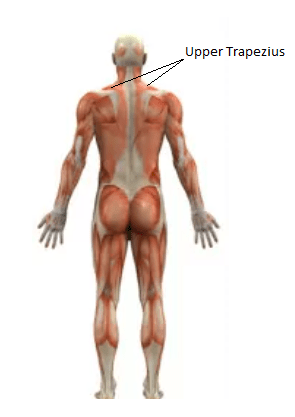Exploring Trapezius Anatomy: Origin, Function, and Clinical Relevance
Updated:
The trapezius muscle is a key player in the complex network of muscles that make up the human upper body. Understanding its anatomy and function is crucial for healthcare professionals, athletes, and anyone interested in maintaining a healthy and pain-free neck and shoulders. In this article, we will delve into the trapezius muscle’s anatomy, functions, nerve and blood supply, how to palpate it, its clinical relevance, and common injuries associated with it.
Trapezius Anatomy

Origin and Insertion: The trapezius muscle, often referred to as the “trap,” is a large, kite-shaped muscle. It originates from the occipital bone at the base of the skull, the ligamentum nuchae, and the spinous processes of the cervical and thoracic vertebrae. From these origins, it extends downward and outward to insert onto the lateral third of the clavicle, the acromion process of the scapula, and the spine of the scapula.
Action and Function: The trapezius muscle is responsible for several critical movements of the shoulder girdle. These actions include:
- Elevation: It raises the scapula, like when shrugging your shoulders.
- Depression: It lowers the scapula.
- Retraction: It pulls the scapulae together, as in squeezing your shoulder blades.
- Upward Rotation: It rotates the glenoid cavity upward, allowing for arm abduction above shoulder level.
The trapezius plays a vital role in maintaining good posture, head control, and stabilizing the shoulder blades during various upper body movements.
Nerve Supply and Blood Supply: The accessory nerve (cranial nerve XI) primarily innervates the trapezius muscle. Blood supply to the trapezius comes from branches of the transverse cervical artery and the superficial cervical artery.
Palpation of the Trapezius Muscle
To locate and palpate the trapezius muscle, follow these steps:
- Stand or sit behind the person whose trapezius you want to examine.
- Start at the base of the neck and move your fingers outward towards the shoulders.
- Feel for the muscle’s thick, flat, triangular shape.
- To locate the upper trapezius, focus on the area around the base of the neck and the lateral aspect of the neck. The middle trapezius is typically found between the shoulder blades, while the lower trapezius extends down towards the middle of the back.
Palpation is an essential skill for healthcare practitioners, such as physiotherapists and massage therapists, as it helps in identifying muscle tension, knots, or areas of pain.
Clinical Relevance of Trapezius Anatomy
Understanding the trapezius muscle is essential in various clinical settings, including physiotherapy, chiropractic care, and sports medicine. The trapezius can be a source of pain and dysfunction due to issues like muscle imbalances, poor posture, or overuse. Common clinical applications include:
- Posture Correction: The trapezius is crucial for maintaining proper posture. Weak or imbalanced trapezius muscles can lead to rounded shoulders, neck pain, and tension headaches.
- Rehabilitation: After shoulder or neck injuries or surgeries, trapezius strengthening exercises are often included in rehabilitation programs to restore function.
- Myofascial Release: Therapists may use various techniques, including trigger point therapy and myofascial release, to alleviate pain and muscle tension in the trapezius.
Common Injuries
The trapezius muscle can be susceptible to various injuries and conditions, including:
- Strains: Overexertion or sudden, forceful movements can lead to trapezius muscle strains, causing pain and limited range of motion.
- Tension: Chronic tension in the upper trapezius, often due to poor posture and stress, can result in discomfort and trigger points.
- Nerve Compression: Impingement of the accessory nerve can lead to weakness and atrophy of the trapezius, known as accessory nerve palsy.
Understanding trapezius anatomy and function is key to preventing and addressing these issues effectively.
For more information on trapezius-related topics, you can visit:
Trapezius Anatomy – References
- Trapezius Muscle by Ken Hub
- Moore, K. L., Dalley, A. F., & Agur, A. M. (2014). Clinically oriented anatomy. Lippincott Williams & Wilkins.
- Neumann, D. A. (2010). Kinesiology of the musculoskeletal system: Foundations for rehabilitation. Mosby.
- Palastanga, N., Field, D., & Soames, R. (2006). Anatomy and human movement: Structure and function. Elsevier Health Sciences.

Link to this Page
If you would like to link to this article on your website, simply copy the code below and add it to your page:
<a href="https://physioadvisor.com.au/exploring-trapezius-anatomy-origin-function-and-clinical-relevance”>Exploring Trapezius Anatomy: Origin, Function, and Clinical Relevance – PhysioAdvisor.com</a><br/>Learn about trapezius anatomy including origin, insertion, action, nerve supply, blood supply, palpation and more on PhysioAdvisor...
Return to the top of Exploring Trapezius Anatomy: Origin, Function, and Clinical Relevance.
